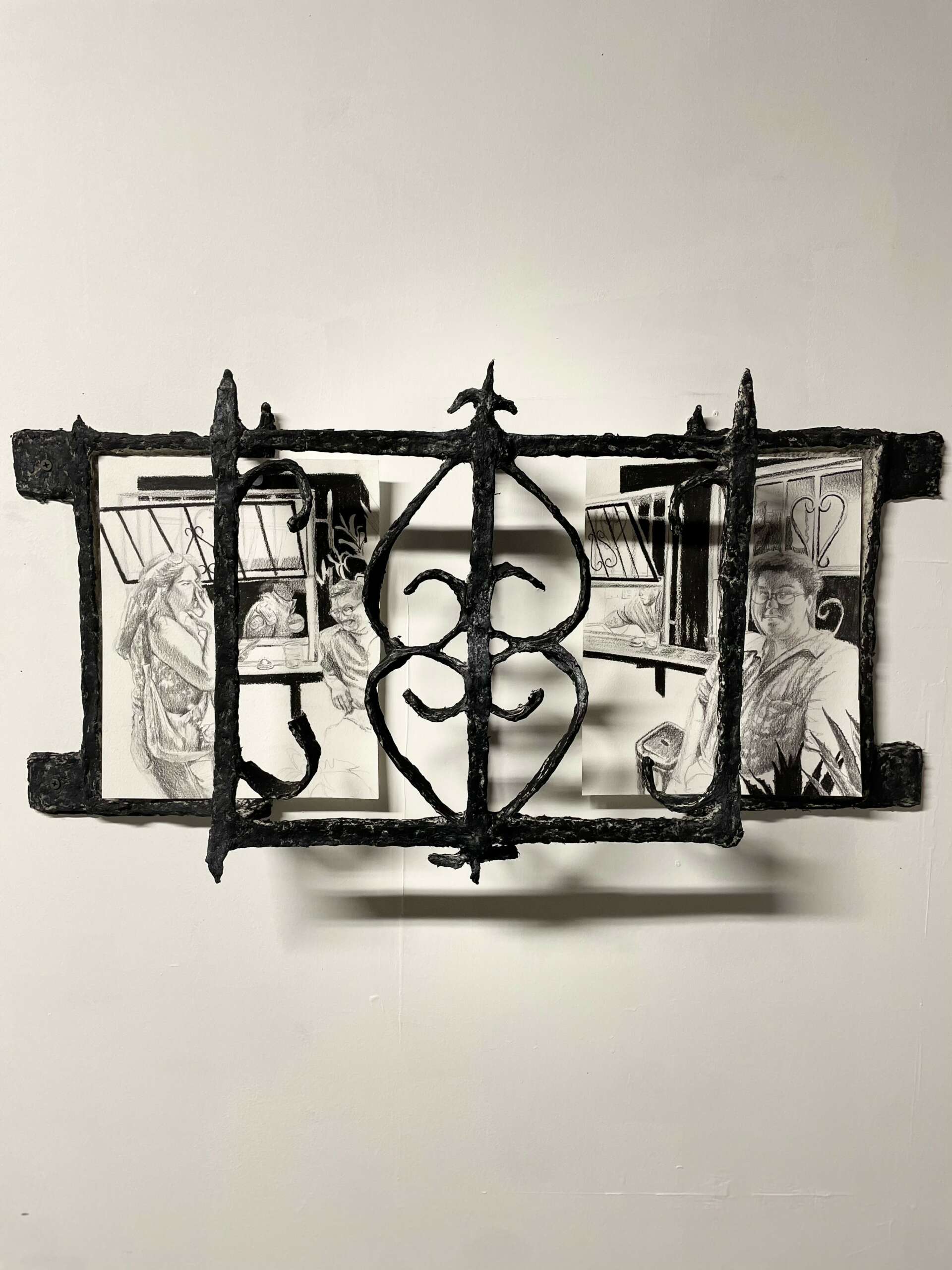We recently connected with Jesus Trevino and have shared our conversation below.
Jesus, looking forward to hearing all of your stories today. We’d love to hear about a project that you’ve worked on that’s meant a lot to you.
Last summer I founded an art nonprofit called Frontera Arts in Bloom to fund an artist-in-residence program in my hometown of Brownsville, Texas called the Flower Shop Art Residency.
It wasn’t until I went to grad school at UT Austin, that I left the Rio Grande Valley and gained the perspective I needed to really appreciate where I came from and want to take a deeper dive into the regional history and my place in it. It was also then that I noticed the lack of access to art and the many opportunities that other cities and schools provide for the community. The exposure to contemporary art practices, resources at the school, and just conversations I was a part of while being in those spaces were essential for my art and my journey of healing and reconnecting to my family, place, and the past.
Wanting to address some of those disparities, some of my friends and I put together a program that was somewhere between an artist incubator, visiting artist program, and art residency for our school and community. We invited artists from all over to temporarily move their art practice to a historic Flower Shop in Brownsville. We then built community engagement programming around them that includes workshops, art talks, exhibitions as well as participating in studio critiques at the University of Texas Rio Grande Valley.



Great, appreciate you sharing that with us. Before we ask you to share more of your insights, can you take a moment to introduce yourself and how you got to where you are today to our readers.
My name is Jesus Trevino and I’m an artist from Brownsville, Texas. Whether it was making videos, decorating, doodling, making comics, playing music, I’ve always loved making things. I would go to museums for my birthday and feel like everything in there was so precious and important just for simply being in that space. Paintings specifically were elevated to the point of feeling mystical, but maybe that’s because I’d only focus on the 16th century oil paintings. Visual art was always something that felt unobtainable and out of reach, until some impressionable teachers demystified the idea of being an artist. With guidance, I dedicated time to learning how to paint, and gave myself permission to make things. The last 8 years or so have been just that, a process of learning how to make things like those I admire while taking advantage of opportunities that come my way. I was initially a figurative oil painter but have since been expanding my tool bag, materials list and visual imagery that speaks to the themes that I’m interested in. Those tend to be about my relationship to the borderlands, my family, and how a history of movement has affected my sense of self. The paintings I make are usually everyday scenes with a slight agitation. Moments that I collect from photo albums, family members, and articles about the border are interrupted by materials like used motor oil, paper clay sculptures and frescos, or actions like wood burning sanding, and concealing through layers of paint.
The failures and accidental successes of these material explorations have been the most exciting part of the art practice I’m trying to maintain, while using my work as an excuse to reconnect, show my love and appreciation for my friends and family has been the most rewarding part of it. Having been disconnected from my family, I find fulfillment in honoring their lives and stories while healing through introspective art making and play.



What do you think is the goal or mission that drives your creative journey?
Growing up there was always a pessimism about being from the border. You’d often hear things like there’s nothing out here, if you don’t leave, you’re somehow failing. Because place is so intrinsically tied to identity, I think it affects a lot of people’s sense of self and relationship to their culture. That was the case for me. Art has been vital to my personal journey and healing, and so part of the mission of my nonprofit, Frontera Arts in Bloom, is to facilitate opportunities to heal and grow through art making.


How can we best help foster a strong, supportive environment for artists and creatives?
Speaking from personal experience, I think the best way people can support artists is to be an artist themselves. I think people should make things. Being creative is being human. Making things/attempting to make things teaches people how to appreciate the world they inhabit. It enriches life, by inspiring curiosity and interest in learning from other people’s work and experiences. You start to become aware of what goes into adorning the everyday moments, cycles and structures of our lives, and then a desire to contribute to it somehow. Supporting others who are on that same journey then becomes a natural thing because you’re affected and inspired by what artists are sharing.
Contact Info:
- Website: jesustrevinoart.com
- Instagram: @jesustrevinoart, @flowershopartstudio
Image Credits
Headshot: Luiza Folegatti


